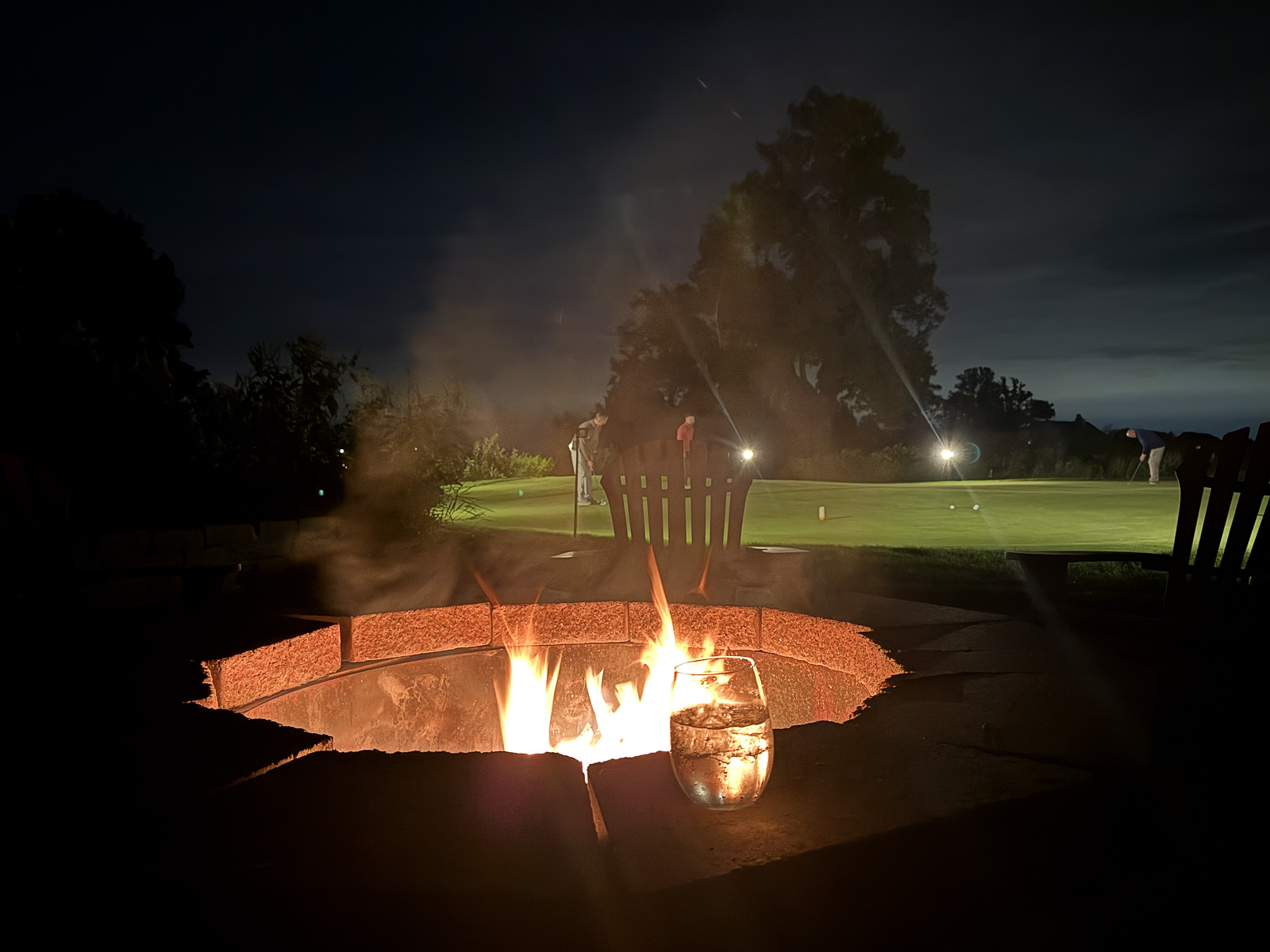I had a moment this weekend while visiting Windsong Farm outside of Minneapolis, when I realized just how much good golf there is around the world.
Up until a month ago, despite being one of the top-ranked courses in Minnesota, I’d never heard of Windsong Farm.
Yet, as I stood on the balcony of the Murphy House (more on that in a minute) overlooking the stunningly beautiful South Course, all I could think of was how do more people not know about this place?
The South Course at Windsong Farm was built in 2002 by John Fought and Tom Lehman, and it’s a Championship Course with a capital C.
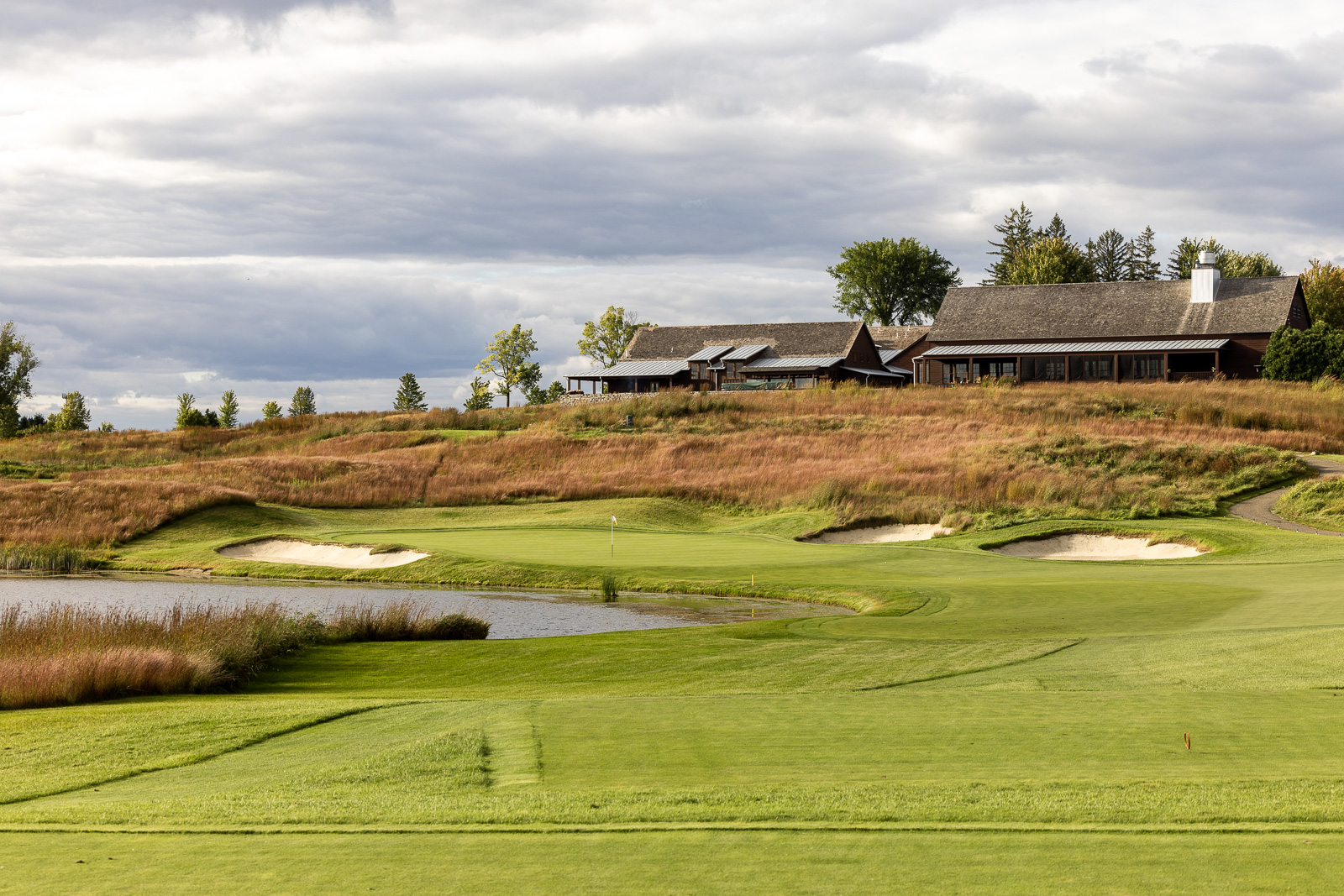
It can stretch to over 7,600 yards, has held numerous USGA events, and during the time I was visiting, they were hosting the annual Gopher Invitational, where 14 of the best college teams in the country were facing off over two days.
The first thing that comes to mind when thinking about this course is “big”. It’s set on 220 acres, and everything about it feels big, bold, and meant to test the best golfers in the game. It’s very different, but the scale of it kind of reminded me of Circling Raven outside Coeur d’Alene, Idaho.
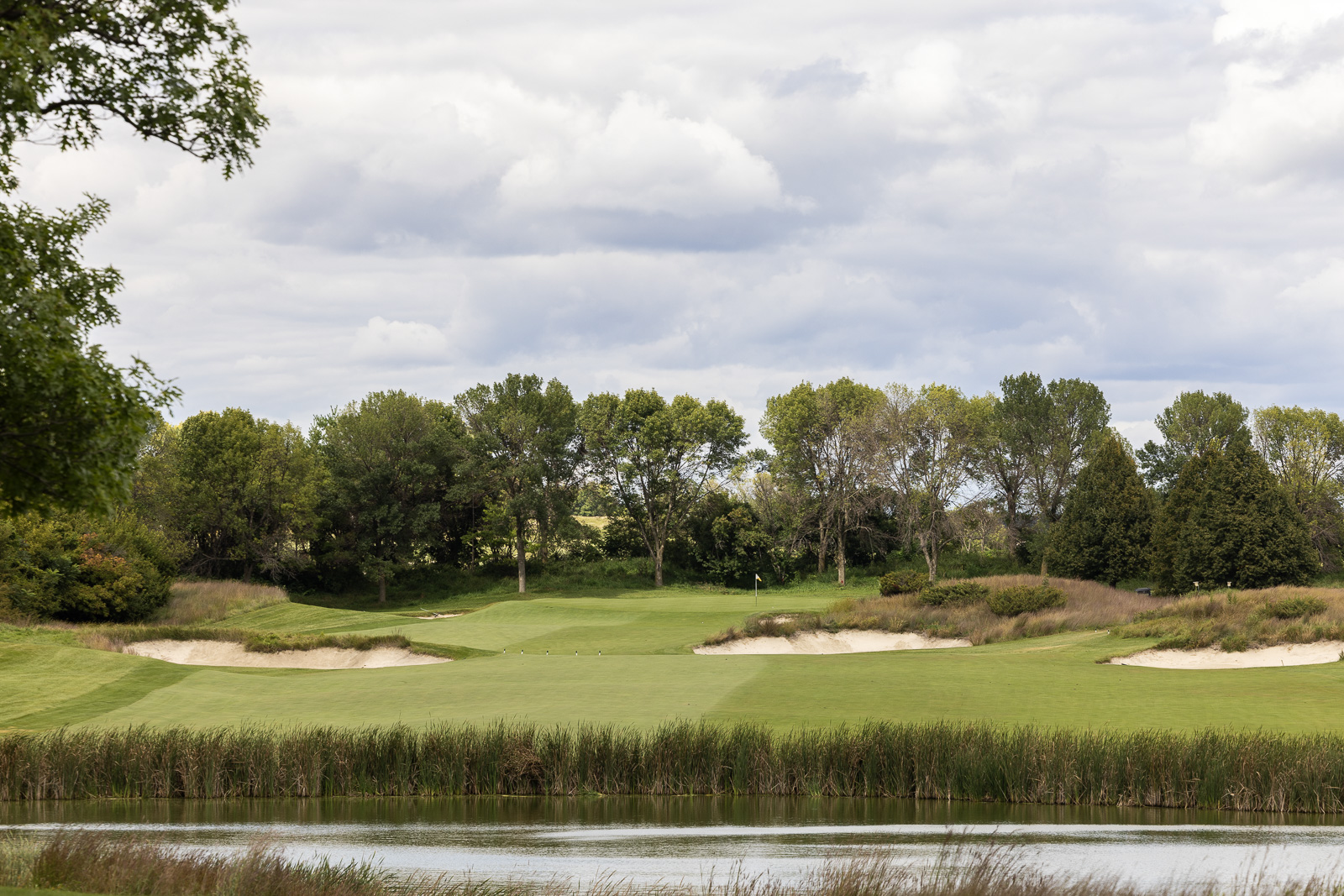
But despite loving my round on the South Course, that wasn’t why I was visiting Windsong Farm.
This Summer, they opened the brand new North Course. And I don’t think you could have built a more opposite golf course if you tried.
And I mean that in the best way possible.
The History of the North Course at Windsong Farm
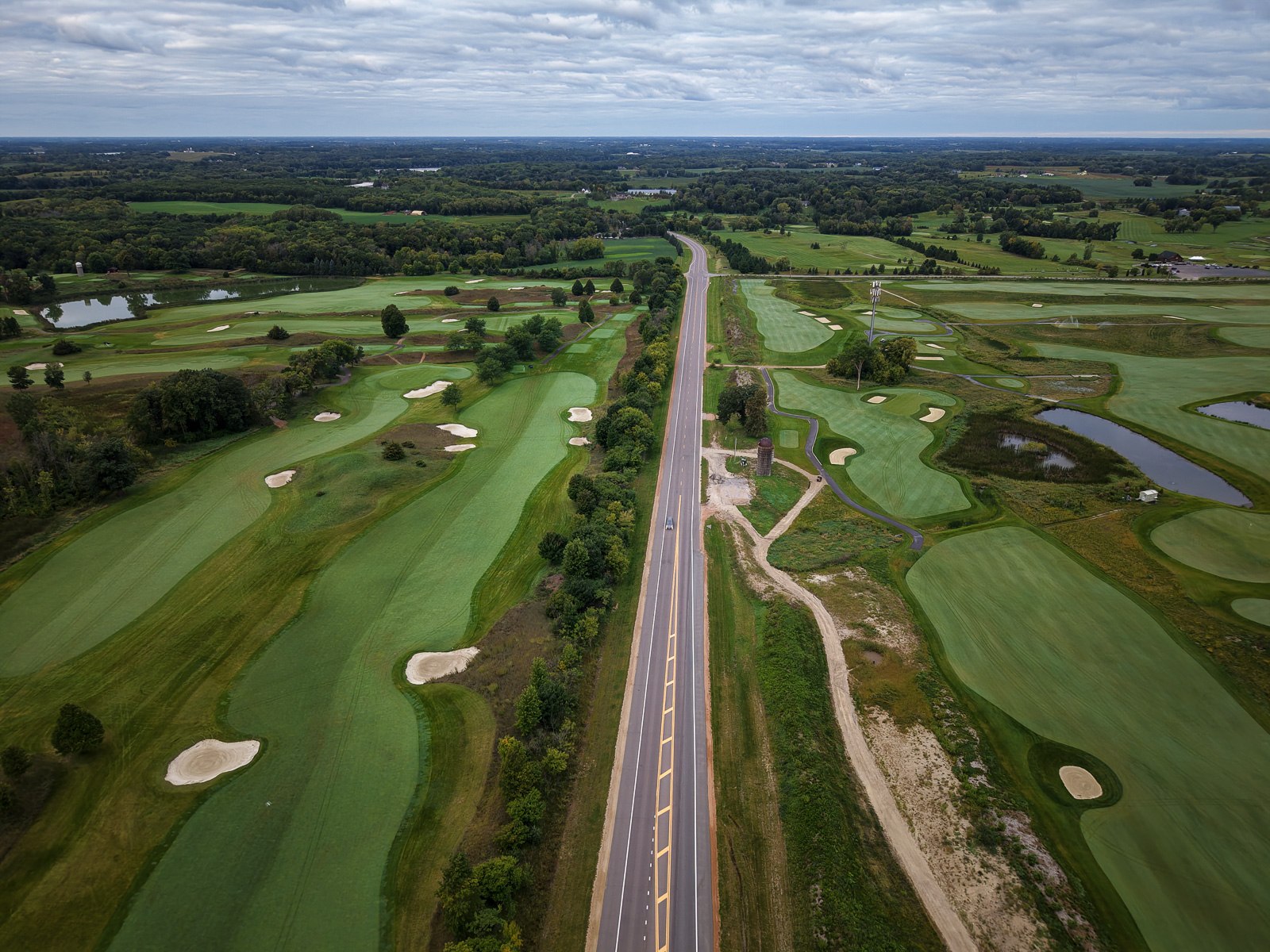
When David Meyer bought Windsong Farm a little over a decade ago, the place had a good reputation, but needed some updates.
Between building the Murphy House lodging, a new world-class practice facility, and making smart course updates, he’s turned it into one of the premier private clubs in the country.
But for years, there’s been some property on the other side of Watertown Road that has had him thinking “what if…”
Lots of ideas were thrown around for a course, but there was one big problem:
It only consisted of about 125 acres.
Sure, world-class golf courses have been built on small plots of land. Merion Golf Club, which is a similarly sized plot, comes to mind.
But let’s just say it’s much more difficult to achieve this task than if you had more land to work with.
Architect John Fought has continued to be involved in work at the Club ever since its inception. So when it came time to take designing a second course seriously, he was an easy first choice to take the helm of a new project.
Like me, John is a native of Oregon, so I’m very familiar with his work.
He built Crosswater Golf Club which is one of my all-time favorite courses. He was also the protege of the late Bob Cupp, and had a significant hand in developing my two home courses at Pumpkin Ridge, where I’ve been a member for over a decade.
But here’s the thing.
When I look at John’s work, I think big, bold, championship golf courses – just like the South Course at Windsong. So when I heard he built a course that’s more of an ode to Raynor or Macdonald on less than 125 acres of land? I truly couldn’t believe it.
Now that I’ve played it? I’m not only a believer, I’m an evangelist.
Hole #4: The Signature Biarritz Green
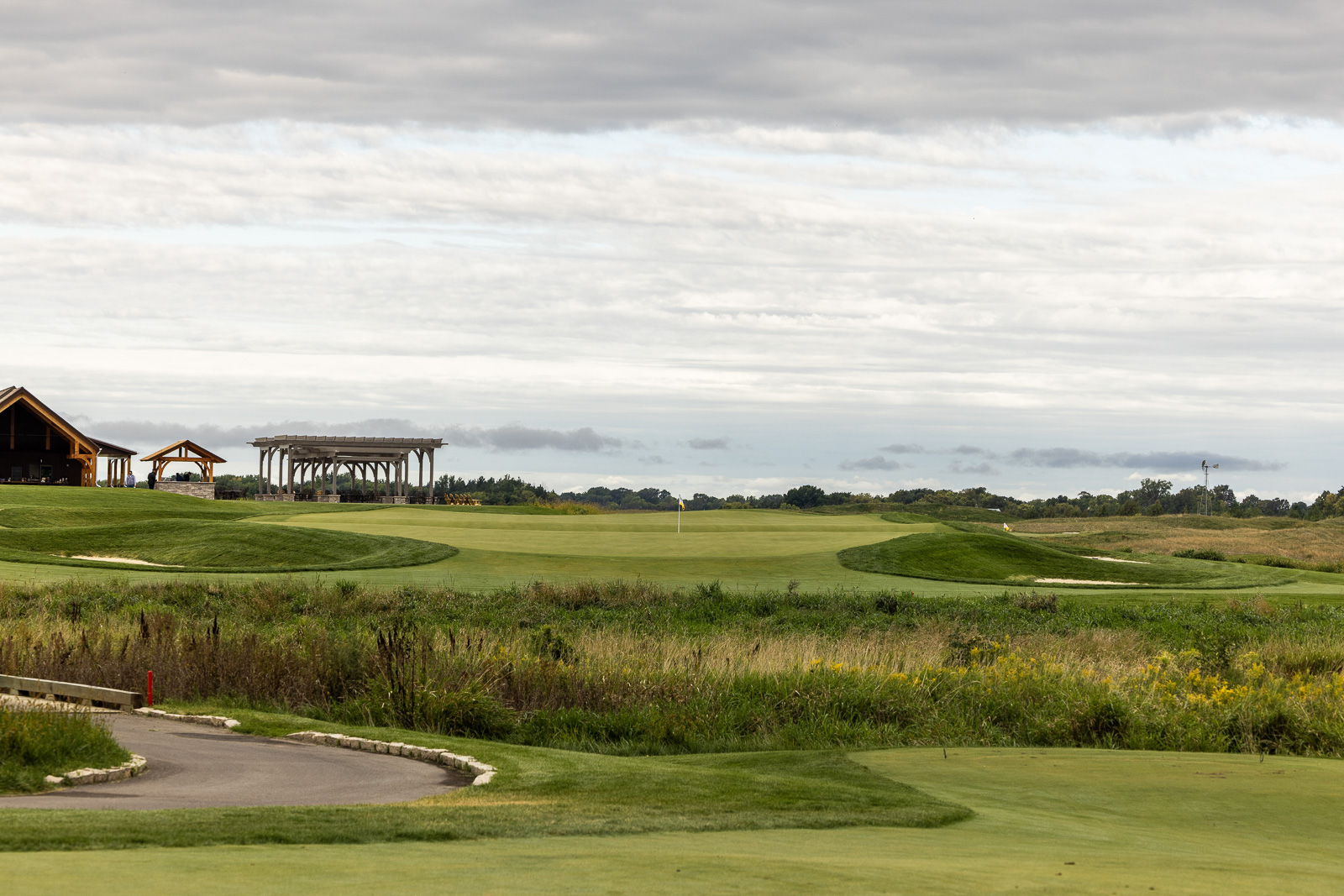
A tunnel was built under the main road that Windsong Farm sits on, and a quick stroll or cart ride through it will take you to the North Course.
The first thing you see?
A big, beautiful Biarritz green.
Like, the kind of green that was built in the 20s, but you rarely see now.
If you’re not familiar with a Biarritz green, let me enlighten you.
Imagine a very long green with bunkers traditionally at all 4 corners of it, and then a massive swale that runs right through the center of the green.
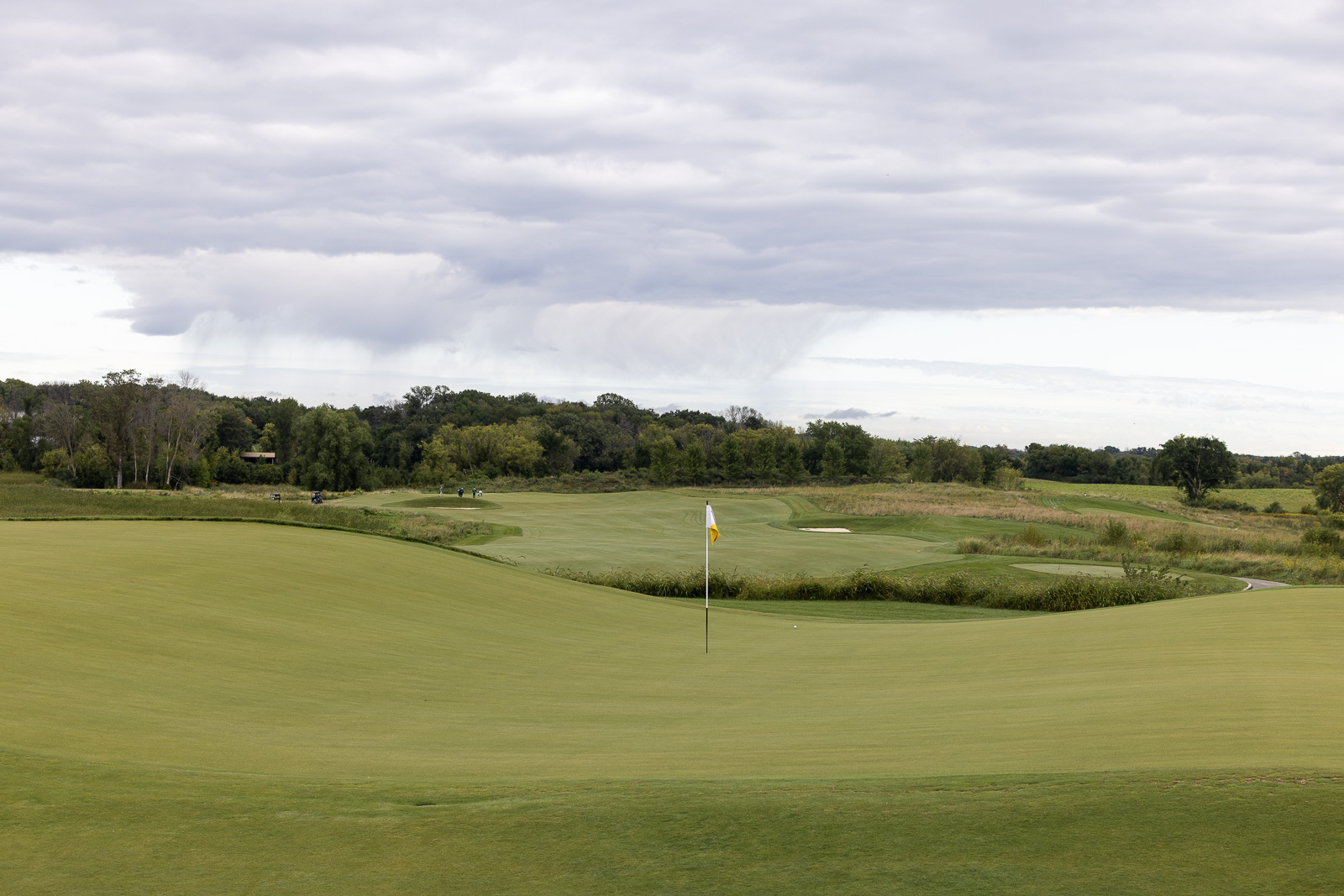
In this case, it’s among the deepest I’ve ever played at over 5 feet deep.
The 9th at Yale is the gold standard of the biarritz, and while this one might lack the drama of the elevation change, it certainly lives up to the hype.
Depending on where the pin is, and which tee you play, this hole can play anywhere from 130 yards to over 250. How’s that for variety?
But the best part?
The green is fully mowed.
Ok, weird comment. Let me explain.
Maintaining this type of green can be a bit of a challenge. As such, it’s common to see some clubs keep the front half of the green at fairway height.
But the best (and most fun) examples of the hole? They mow the entire thing. Playing a Biarritz with a back pin, versus a front pin, versus one directly in the middle of the swale (like we had) makes for a completely different experience – and they nailed it here.
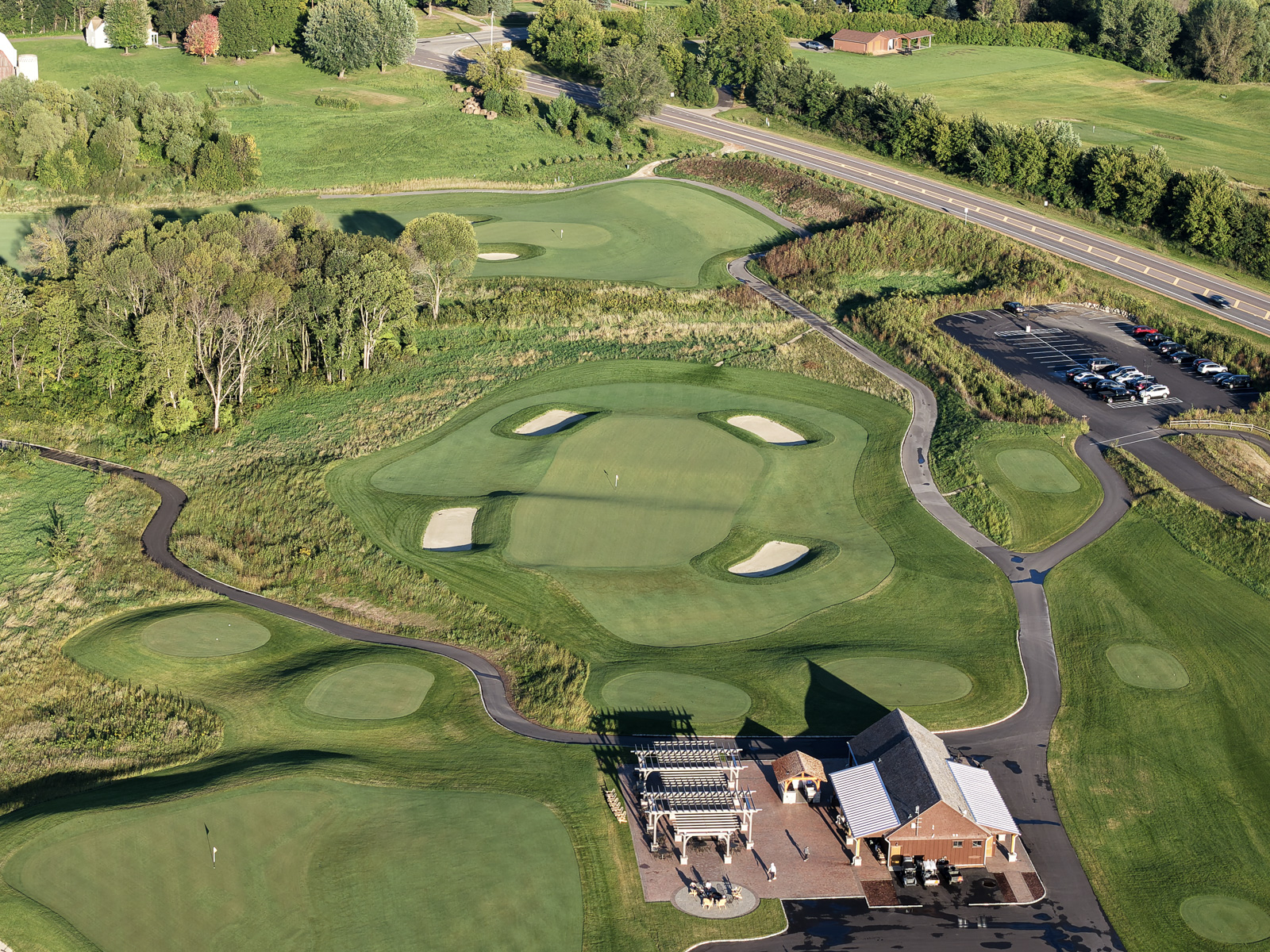
Throw in the fact that the North Course restaurant and patio sit directly behind the green, and you’re left with one of the more memorable golf holes I’ve played this year.
Paying Homage to the Classics: The Templates
As the course was being built, I was told many of the members were happy that a “Ladies Course” was being built, to free up more tee times on the brawnier, original South Course.
At just shy of 6500 yards from the tips, I’d forgive you for thinking this might be the easier test of golf.
It’s not. Or at least not that much easier.
For starters, this is a par 70 course with 6 par 3s – so that alone is going to make it feel longer than the yardage may suggest.
And considering there are some holes that are quite short, there’s room for some beastly holes – such as the 466-yard par 4 first, the 561-yard par 5 third, or the bold 18th hole, a massive 488-yard Cape hole.
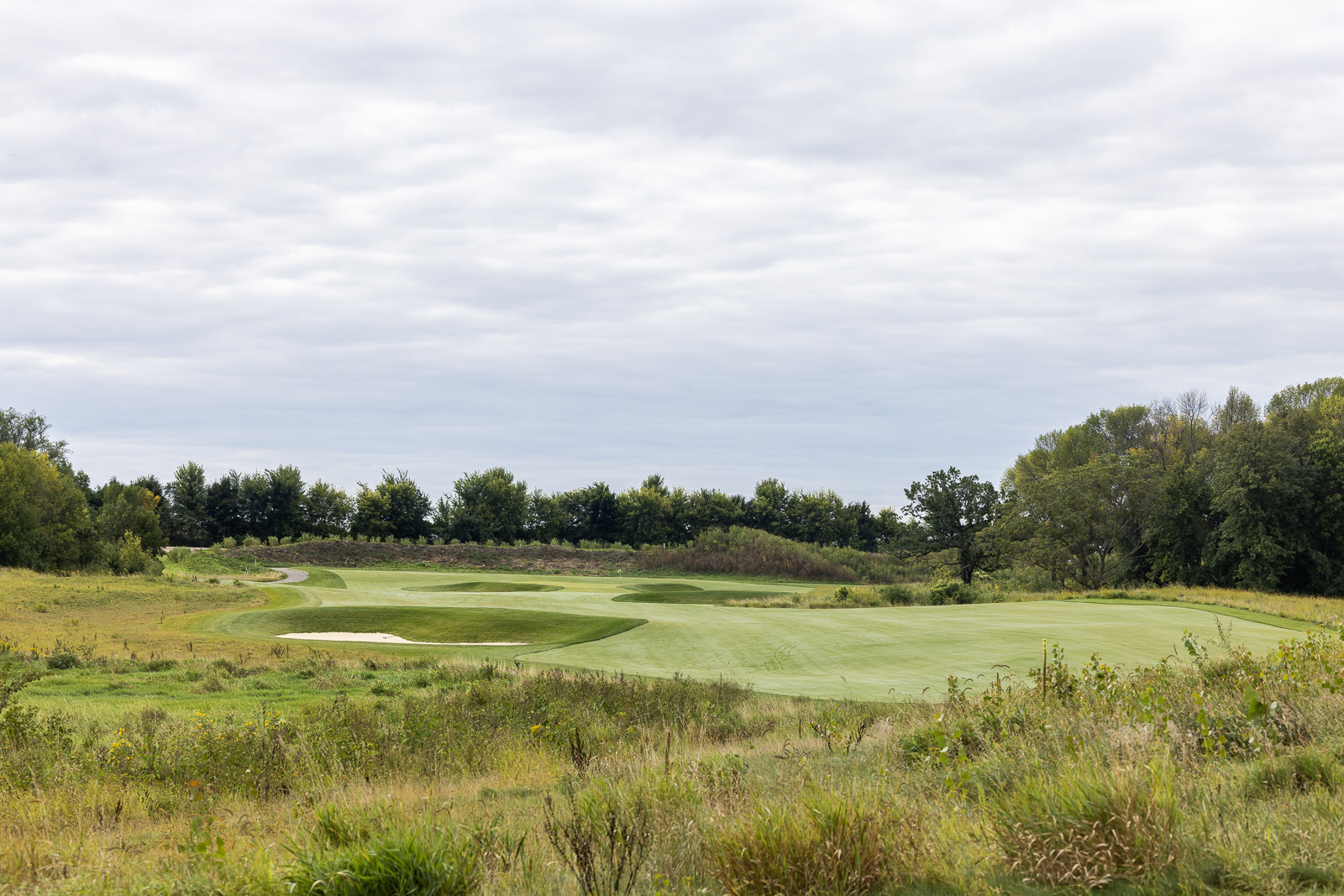
Also, for the record, having just played Cabot Cliffs, which also features 6 par 3s – I’m a fan and want to see more new courses do this.
The North at Windsong Farm feels like it came straight out of the Northeast in the 1920s – and that’s a good thing.
In fact, there are a number of template holes that pay direct respect to the era.
The templates you’ll find on the course are:
2nd Hole: Eden (Par 3, 173 Yards)
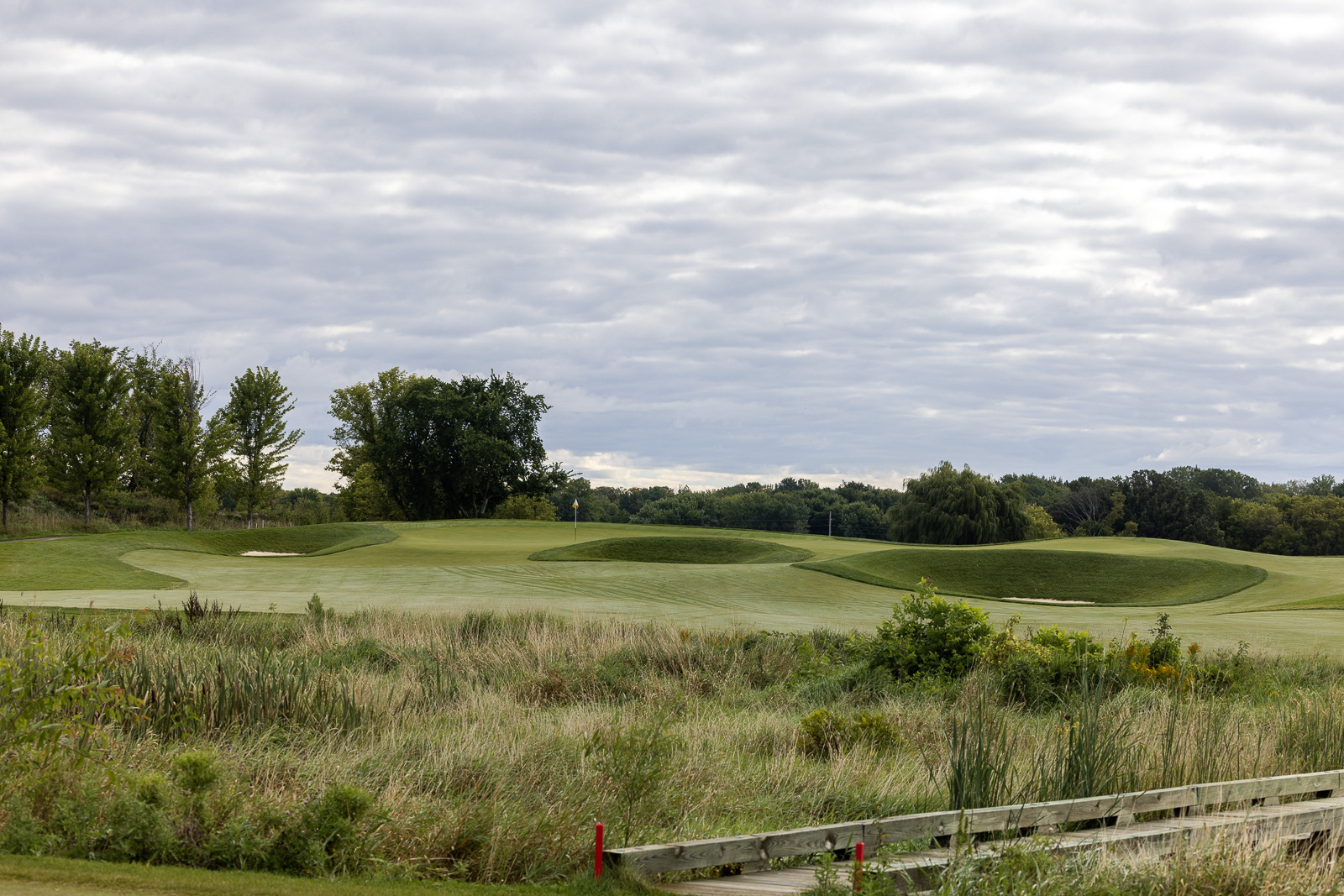
An Eden hole is modeled after the 11th at St. Andrews. It features a wide green with deep bunkers flanking it. This is one of the most fun greens on the course, and the tee shot over wetlands is one of the more scenic on the course.
4th Hole: Biarritz (Par 3, 210 Yards)

As mentioned earlier, a Biarritz is a long par 3 with a deep swale running through the center of the green.
8th Hole: Dell (Par 3, 149 Yards)

A Dell hole is typically set in a natural hollow and features a blind tee shot. Fought mentioned he “wasn’t brave enough to go ‘full Dell’ on this one.” So the natural hollow only encompasses about 3/4 of the green, leaving the run-up to the center of the green open. But it can still be a blind shot depending on the pin placement.
17th Hole: Redan (Par 3, 171 Yards)
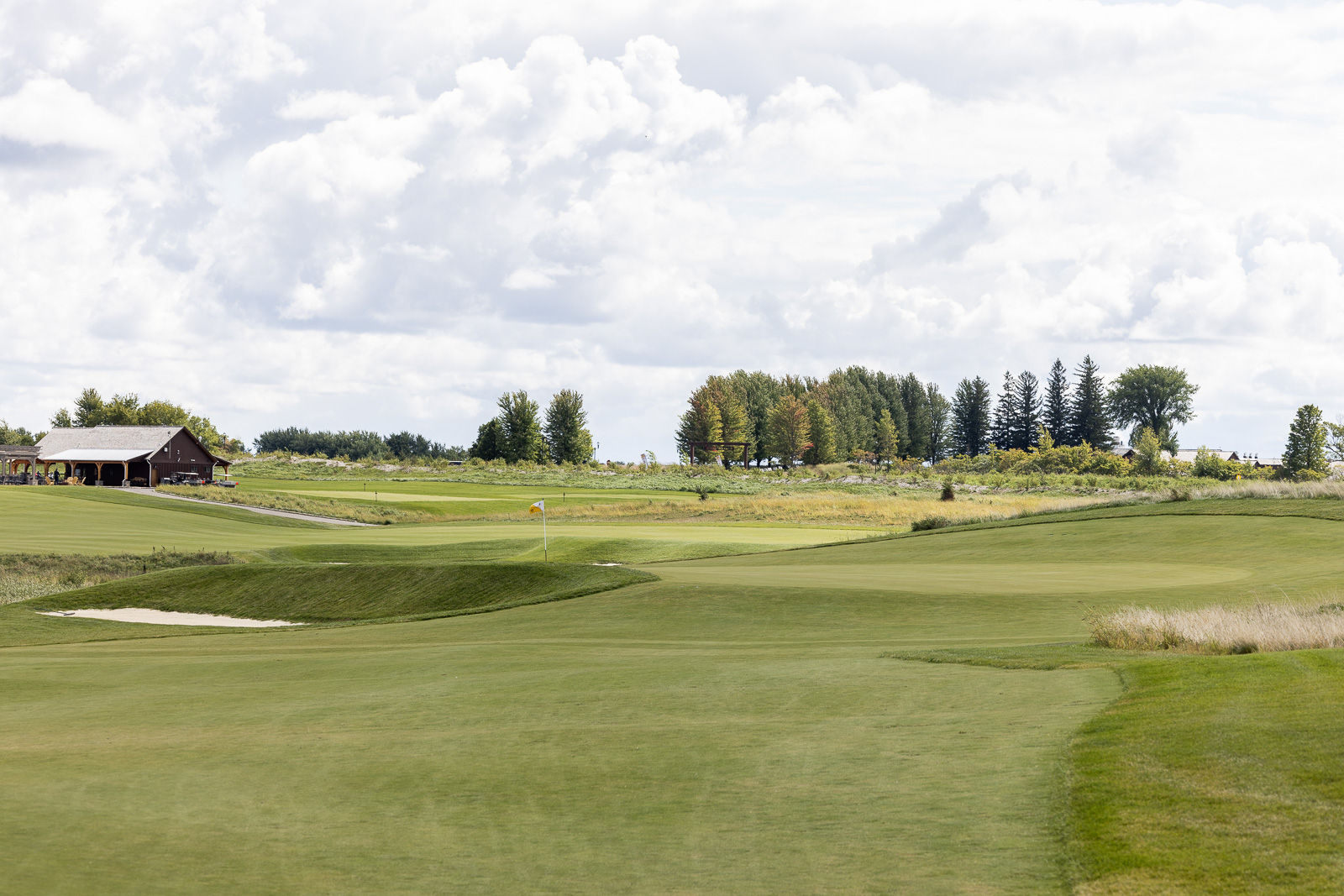
Modeled after the 15th hole at North Berwick, a Redan is a par 3 with a green set at an angle, typically sloping diagonally from front right to back left, demanding a precise shot shaped to hold the tilted surface.
It’s always fun to hit the correct spot on the right side of the green, and then watch it funnel down to a left pin position.
18th Hole: Cape (Par 4, 488 Yards)
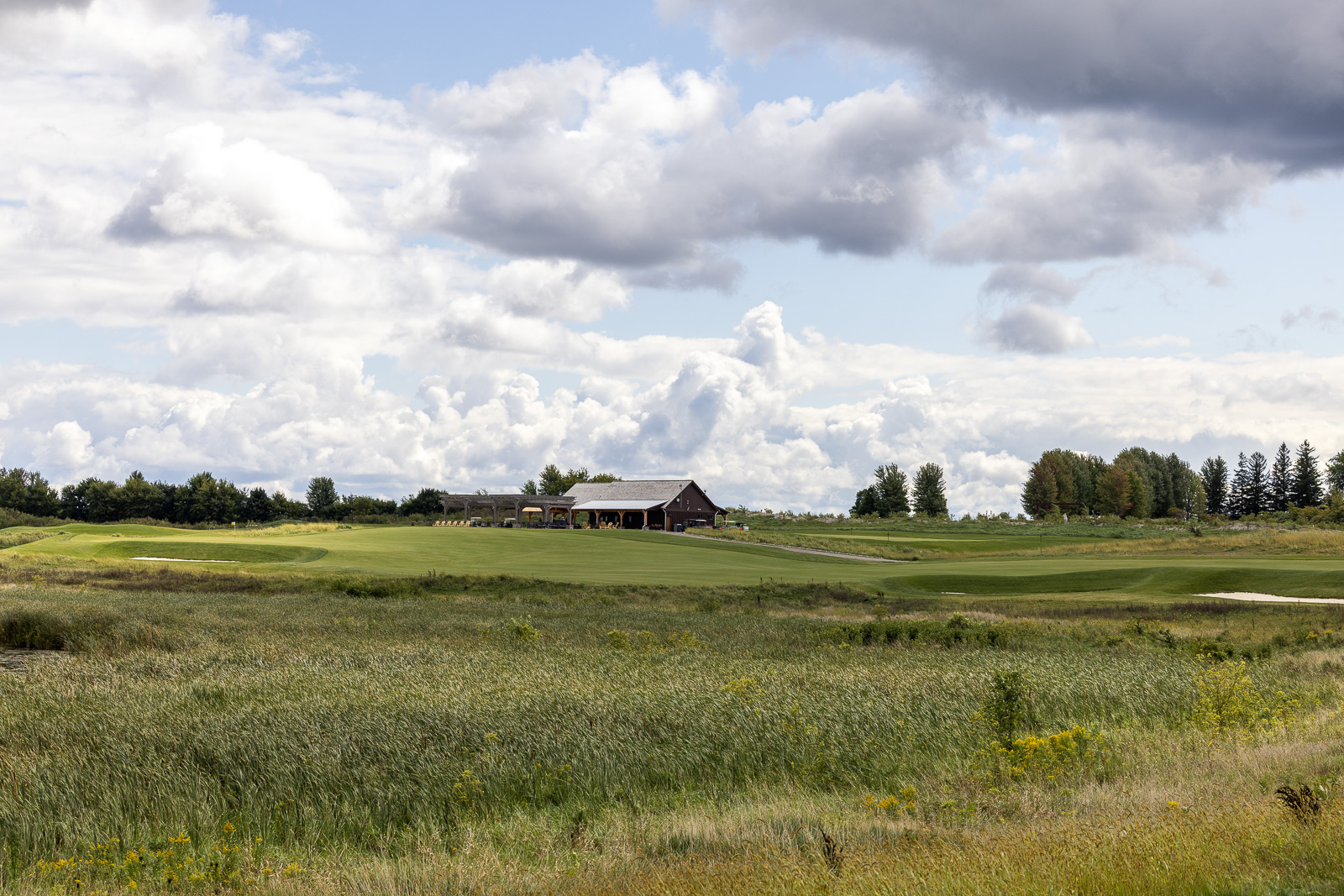
A cape hole is a strategic par 4 or par 5 where the fairway bends around a hazard (often water or sand), tempting players to cut off as much as they dare for a shorter approach.
One of the most famous and challenging is the Par 4, 5th hole at Mid Ocean Club.

This one doesn’t have quite the same elevation change off the tee, but believe me, it’s every bit as intimidating and challenging.
And the good news? Fought and the team at Windsong really did these templates justice. They’re all solid examples of these types of holes, and most importantly, they are a blast to play.
The Templates are Great, But They Aren’t the Only Star on the North Course
Template holes are always fun, and the ones here are exceptionally well done.
But perhaps the biggest surprise to me was just how many other fun and unique holes there are.
When you’re building a new course on such a small footprint, creativity is hugely important.
I think Coore and Crenshaw nailed that when they built the Sheep Ranch at Bandon Dunes on about 150 acres.
Here, they maximized the land through seamless green-to-tee transitions, which in many cases are all mown together. It feels upscale, aesthetically pleasing, and once again, of a different era.
There are a number of holes that stand out for their uniqueness, but a few of my favorites are:
5th Hole (Par 5, 524 Yards)
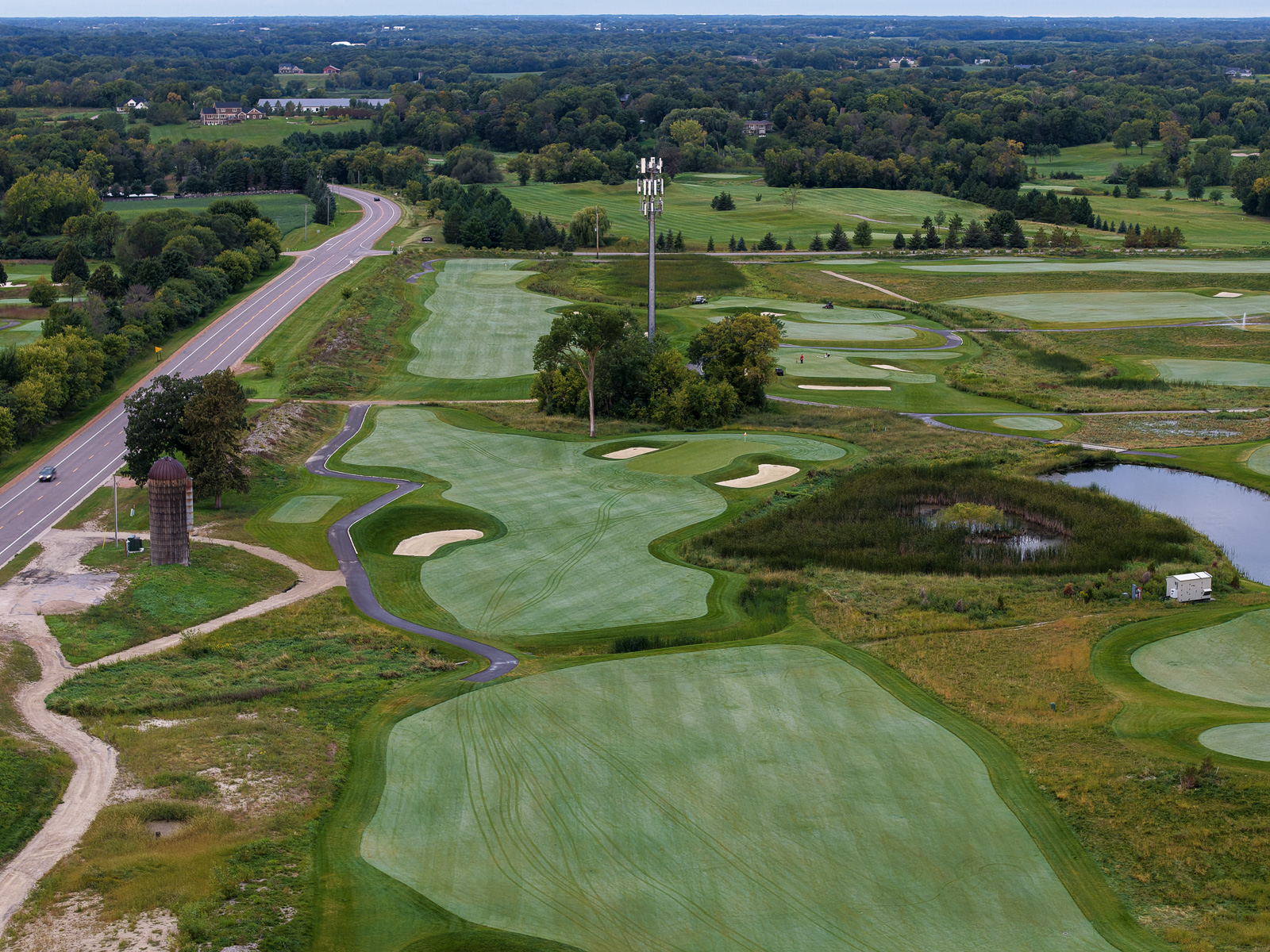
The 5th is at a tricky spot in the round, because you’re just coming off the wonderful Biarritz. So it could be easy for this hole to feel like a letdown.
It’s anything but.
The tee shot is simple enough, straight away, parallel to Watertown Road.
But it’s the second and third shots that stood out to me.
A creek cuts across the middle of the fairway about 2/3s of the way up the hole. So, depending on your drive, you have to decide whether or not to try and clear it on your second, or layup short.
A layup takes some trouble out of play on your second shot, but will likely force you to contend with a blind approach over wetlands to the green. There’s also a hidden bunker short right, you can’t see from the right side of the fairway (I learned this the hard way.)

Get it over the creek left on your 2nd, and you’re rewarded with a clear view of the green, and a much easier angle in.
The 5th forces you to think, and is a wonderful risk-reward hole.
9th Hole (Par 4, 306 Yards)
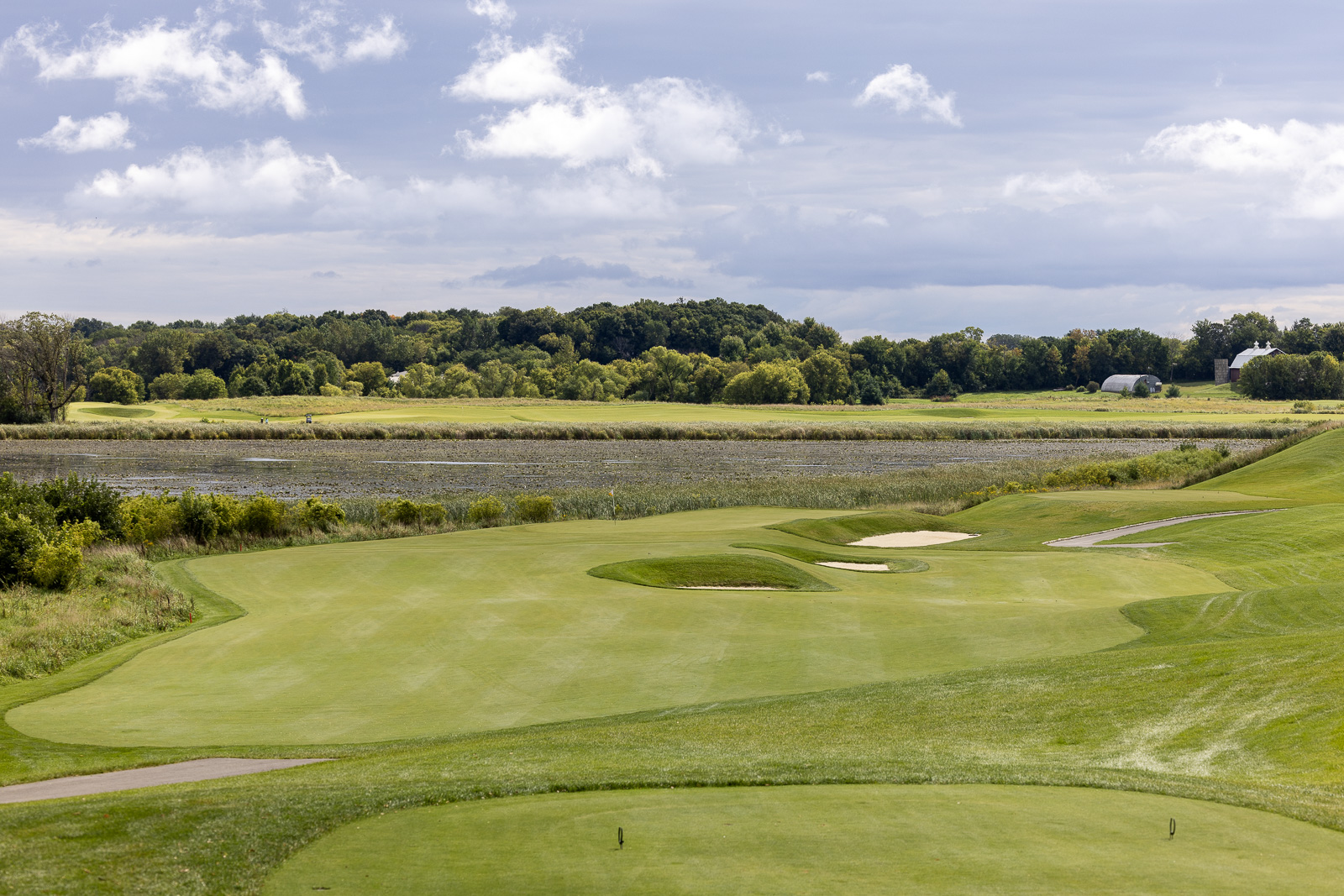
Simply put, this is one of the best short par-4s I’ve ever played.
It was designed with a green that evokes the famous 10th hole at Riviera.
From the tips, you’re looking at 306 yards downhill.
And if playing tees further up, it becomes even more reachable.
This is another hole that has countless ways to play it.
You can play up the left for the best angle into the green, but you’ll bring OB into play a bit more.
Bail out to the right to stay safe off the tee, but you’ll have to contend with a wildly tricky pitch over the bunkers to a very narrow green.
Bomb over the left edge of the center bunker with driver and hope you got your distance right.
Any of these can work, but each one brings an element of risk-reward into play on both your first and second shots.
This is a hole that will undoubtedly yield eagles, and even a few holes-in-ones during its lifespan.
But despite being easy on the surface, I’d bet it’ll yield far more doubles than it will birdies.
13th Hole (Par 3, 161 Yards)
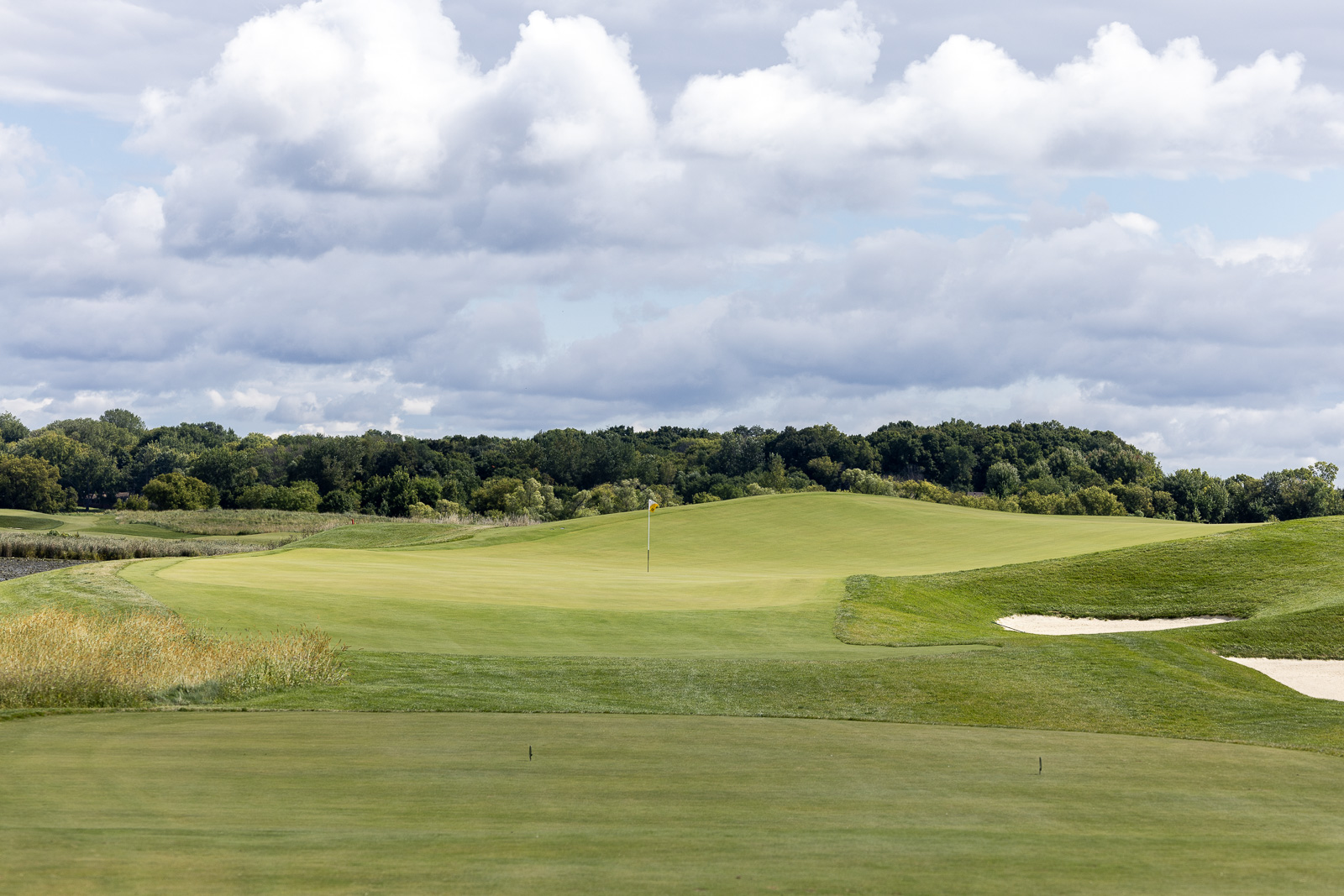
10 feet.
That’s the elevation change between the high point and the low point of this green.
Yes, you read that correctly. And while it might sound impossible, it results in one of the most fun shots on the course.
13 is a shared green with hole 16 – the latter taking the more elevated position here.
At only 161 yards from the back tees, this isn’t a long hole. But hitting it directly into the steep face on the right, and watching it roll back down to the pin is one of the single most fun shots on a course that’s full of fun shots.
And if you get a back pin on 16? Well, you’d better not go long 🙂
15th Hole (Par 4, 351 Yards)
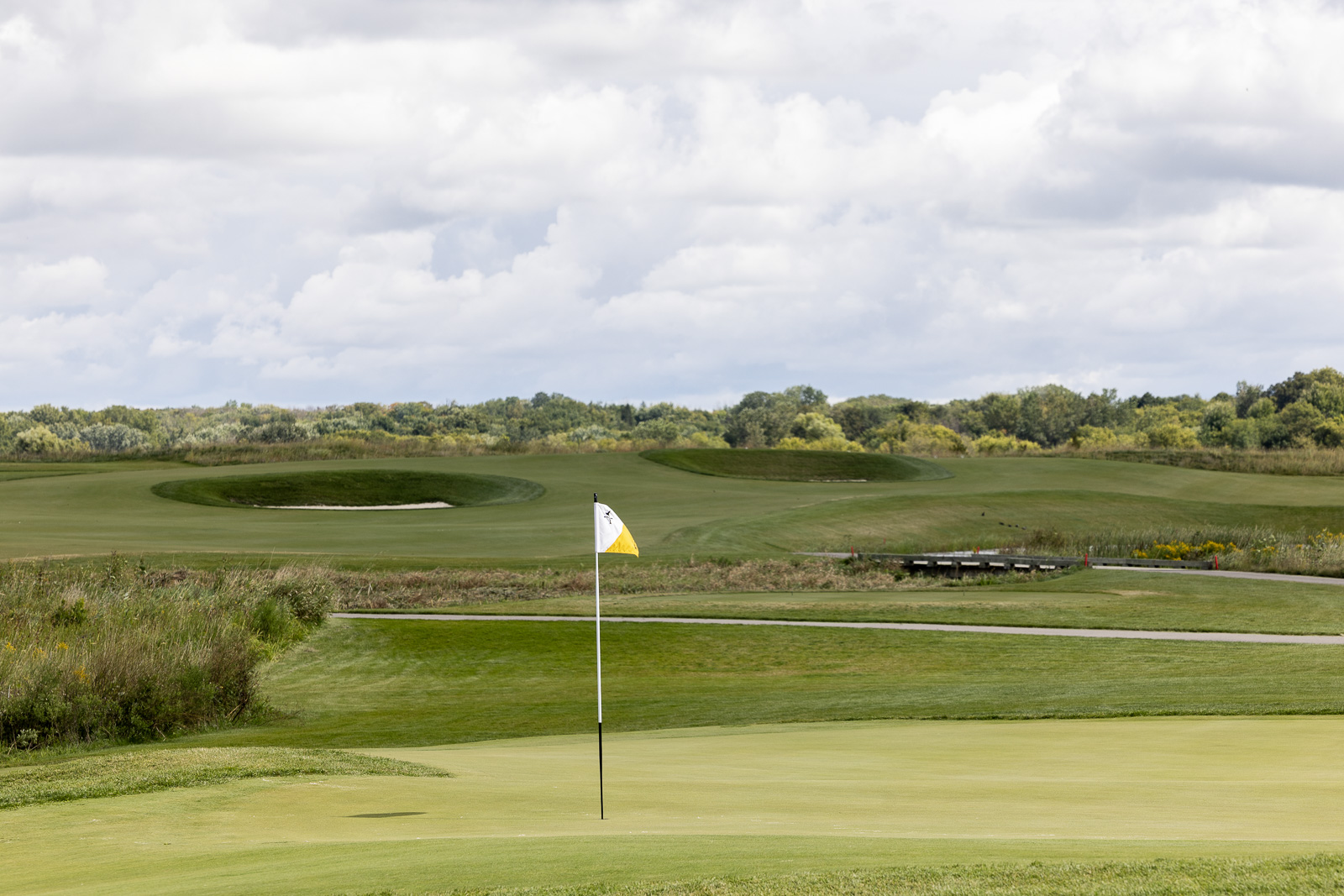
This is definitely one of the quirkier holes on the course, but in a good way.
15 is a dogleg right par 4, that actually plays directly back over 14 green.
A pair of massive bunkers inhabit the middle of the fairway, and there’s water on the right. So choosing the right club off the tee is really important here.
It’s a hole that messes with your depth perception, and will definitely take a few rounds to master it. But it’s an example of how a few bold and creative choices enhance the fun factor of the course.
“Won’t the Course Feel Claustrophobic on Only 125 Acres?”
After reading about those last two holes featuring a shared green and a tee shot over another green, you might be thinking, “is there really enough space for everyone on this course?”
It’s a valid concern, and one I was interested to experience myself.
On such a small footprint, with so many intersecting holes, I had concerns about safety and just how often groups would be getting in each other’s way.
Fortunately, we experienced very little of this.
The routing is pretty cleverly designed to minimize the areas where this will be an issue.
Don’t get me wrong, there are some potential trouble areas.
A serious slice on 7 might land you over on the 11th fairway.
A long approach on 16 could trickle way down that massive green over to 13.
But I think those are the exception rather than the rule.
Something to keep in mind is who this course is for. It’s a private club, with a relatively limited membership, and 15-minute tee times.
So generally speaking, I don’t think there will be many issues hitting into other groups throughout the course.
Staying at the Murphy House
This isn’t related to the North Course, but I wanted to mention it, as it was one of the highlights of the experience.
One of the all-time great golf experiences is when you can go and stay on the property at a private club for a few days.
Places like Ballyneal cater to this and have the experience totally dialed.
Your option for this at Windsong is the Murphy House.
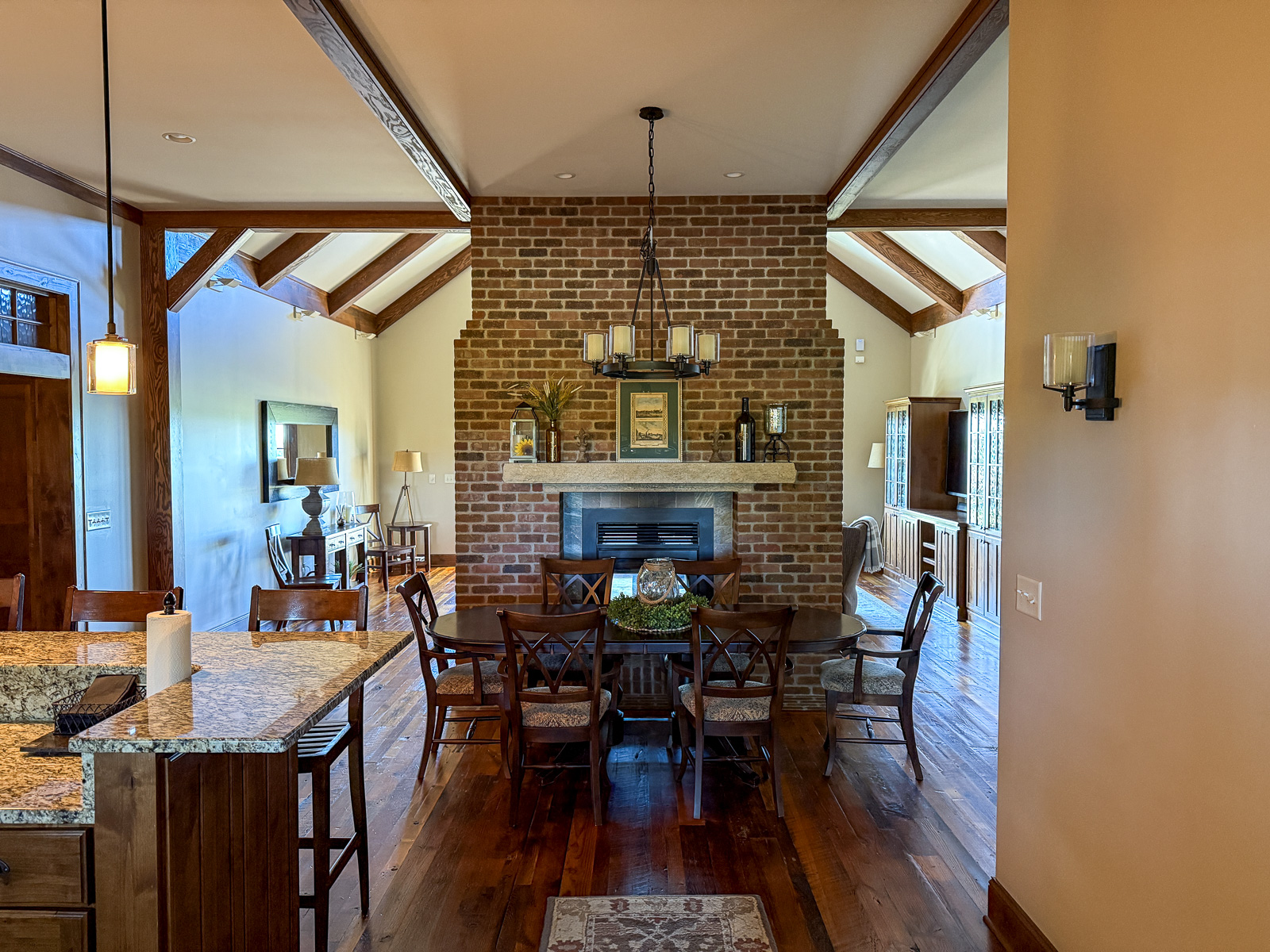
Building this was one of the first investments that Mr. Meyer made after purchasing the Club.
It’s a 6-bedroom house that overlooks the 17th hole on the South Course.
And it’s hands down one of the best golf cabins I’ve ever stayed in. I had a room overlooking the course, and walking out and having coffee on the balcony was one of the single best moments I’ve had this year.
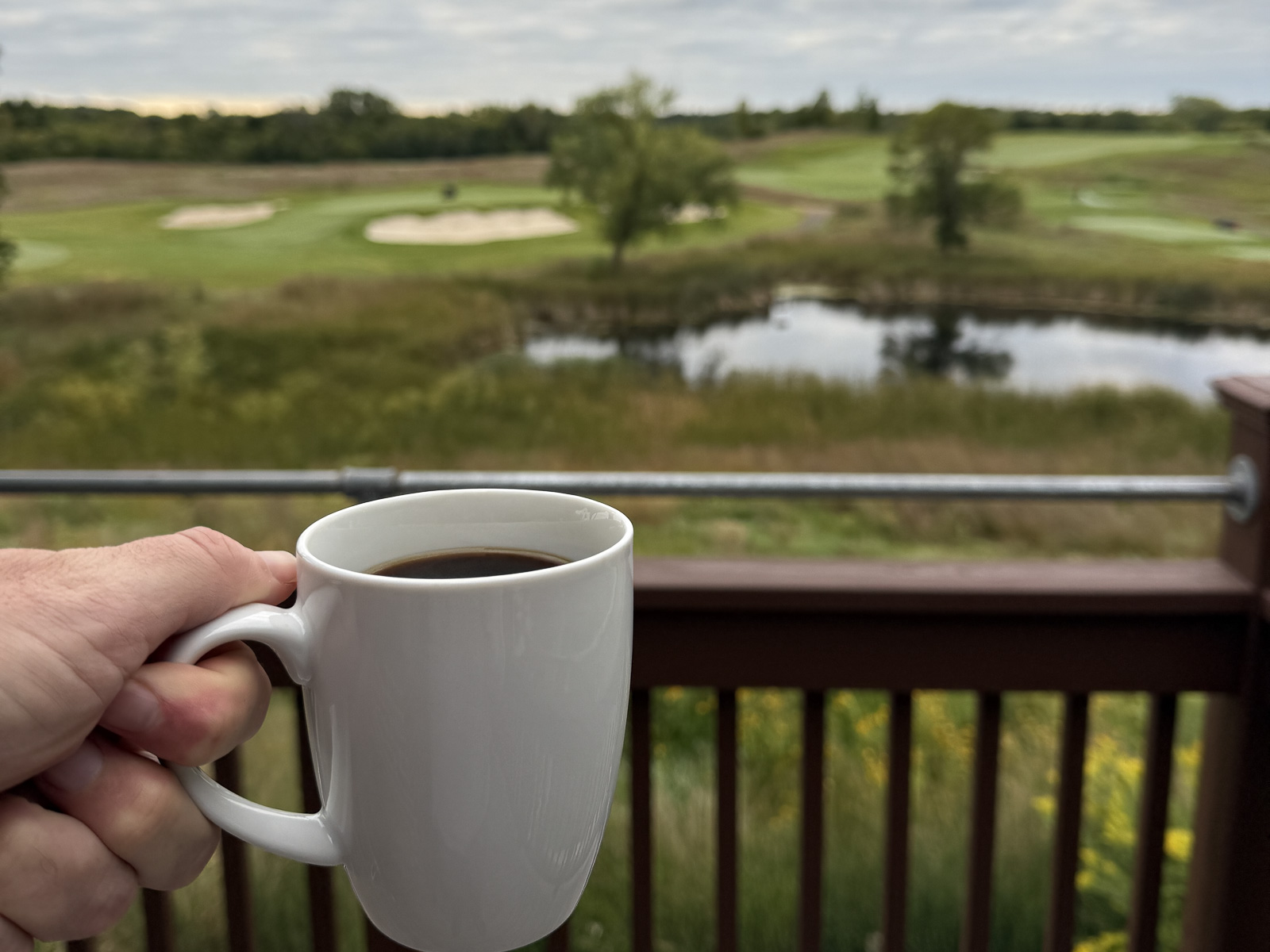
It was one of those “I made some good life choices to end up right here, right now,” moments.
There are two fully stocked kitchens and living rooms.
And when I say fully stocked, I mean fully stocked. Beer, wine, cocktails, frozen pizzas, snacks – you name it.
The 4 upstairs bedrooms are all King en-suites. The larger rooms downstairs each have 2 queen beds, and private bathrooms as well. So you can comfortably sleep 8 guests.
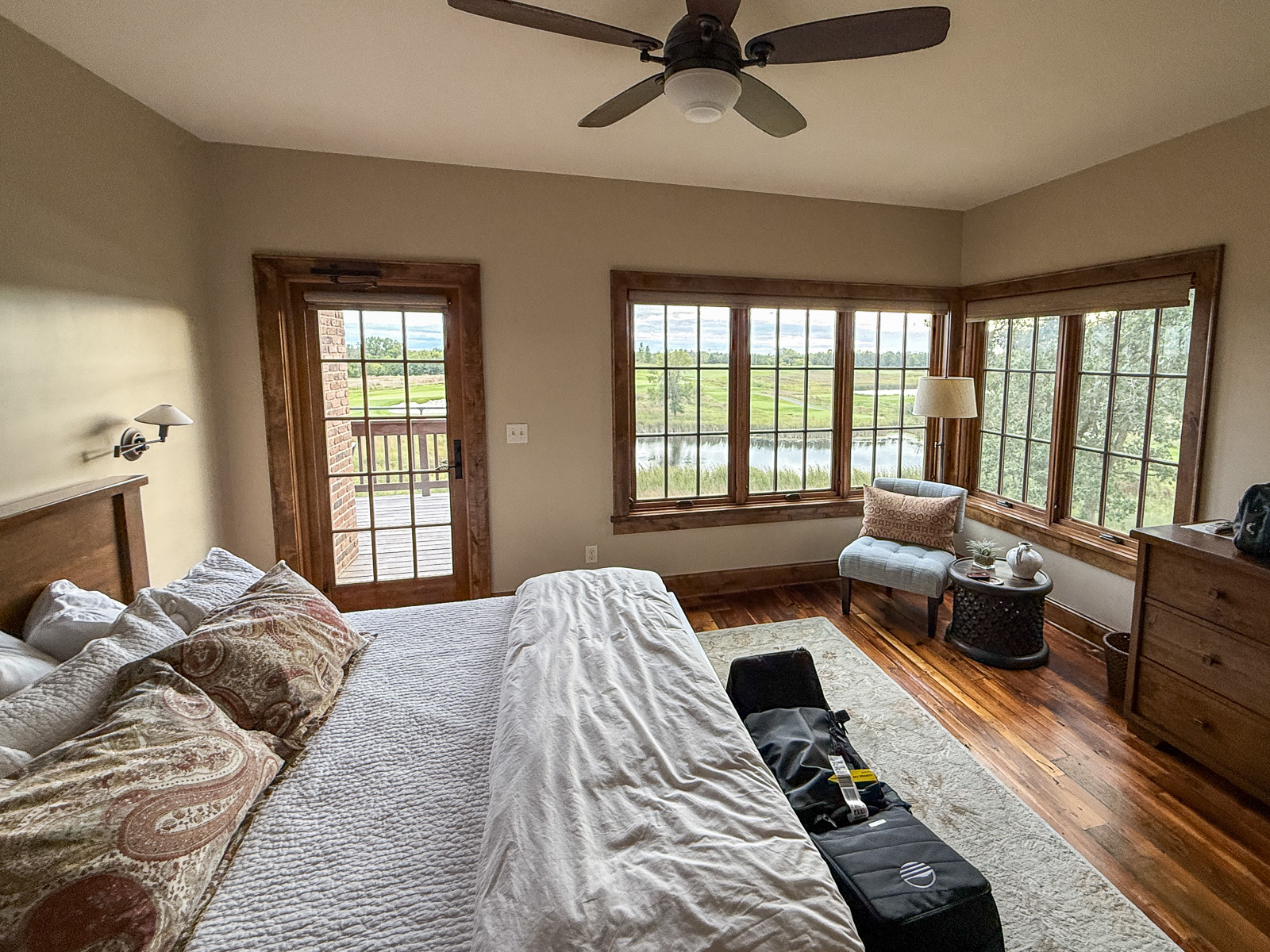
Right out your front door, there’s a private lit putting green and firepit.
When we returned from dinner our first night, the staff had already built us a fire, and we proceeded to spend hours out there enjoying the setting until the wee hours of the morning.
I was so sold on the whole package of Windsong Farm that it even got me thinking about what a national membership might look like.
Direct flights from Portland…
Two incredible golf experiences…
And a place that I’d love to be able to share with friends or Eighty Club members.
Alas, when I heard how quickly the Murphy House gets booked each season, it became clear it probably wouldn’t be the best option for me until they expanded the on-site lodging, which is something that is being actively talked about.
So who knows what might happen in the future 🙂
Final Thoughts on the North Course at Windsong Farm

Windsong Farm exceeded my expectations in every way.
The setting is relaxed and sublime.
The South Course is a wonderful test of golf set among a truly stunning environment.
The food was surprisingly good across the board.
The Murphy House is one of the best golf cabins I’ve stayed in.
And the new North Course? Well, for me, it might have been the star of the show.
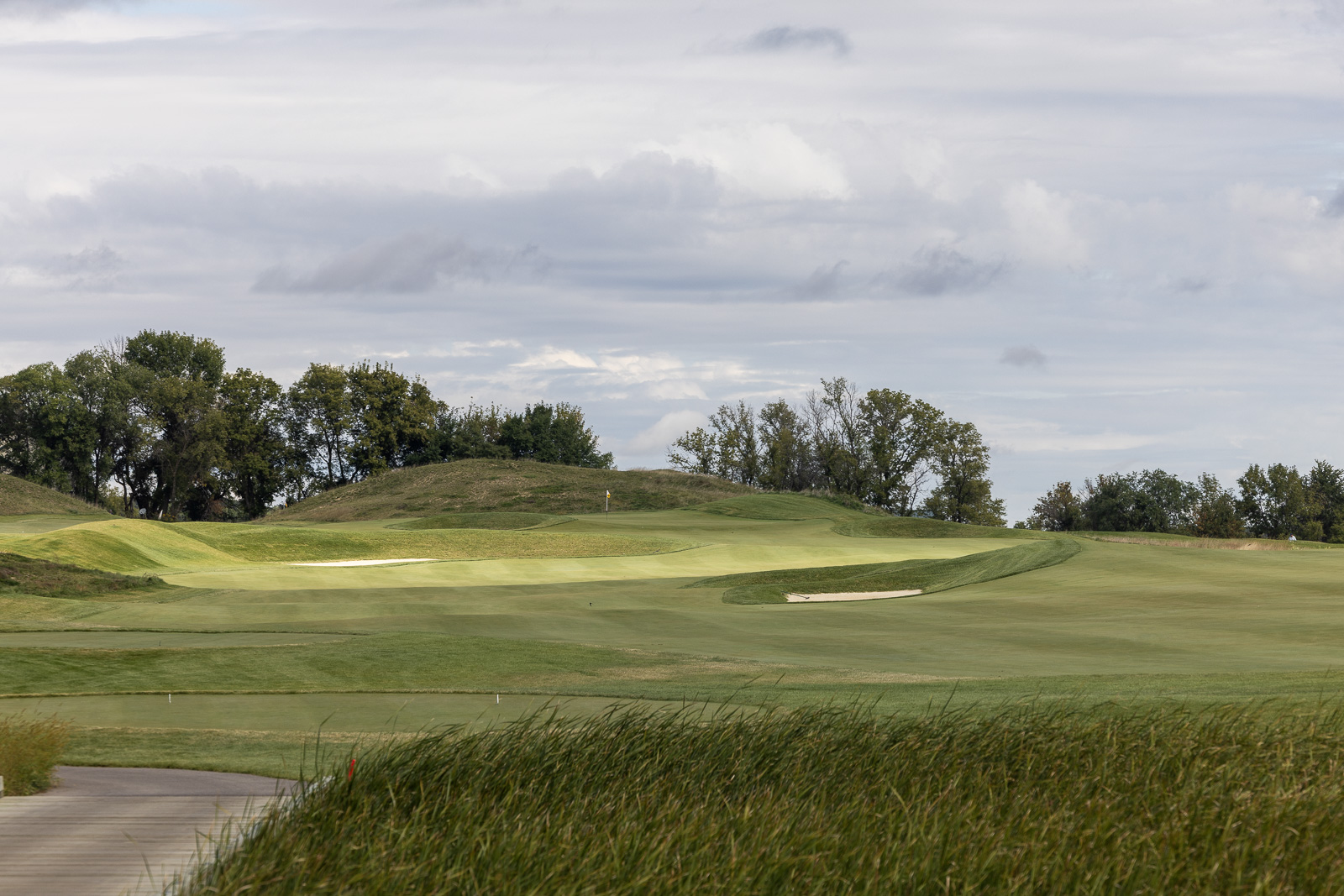
It’s unlike anything I’ve played, and truly encapsulates the thing I enjoy most in a golf course: fun.
This is one of the most unique golf courses you’ll ever play, and if you get an opportunity to do so? I highly suggest you make every effort you can to make it happen.
Oh, and all those members who were looking forward to spending more time on the South Course? Well, rumor has it, most of them have instead been making laps around the North in the weeks since it opened 🙂
Recent Updates:
November 3rd, 2025: Added video version of this post.


